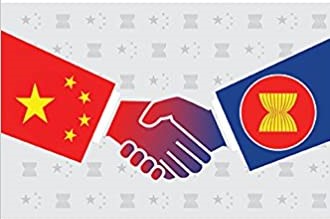Culture: Cornerstone for Consolidating and Expanding China-ASEAN Community of Shared Future

Yajing Zhao and Zhou Xiaomei
The cooperation between China and ASEAN countries is based on the pursuit of political and economic interests among different countries and nations, as well as the drive to achieve a win-win result. However, the commonness in culture is their inherent advantage and "booster”. This is not only a logical deduction, but also a proven fact.
If we examine the development process of EU’s (European Union) political and economic integration, we can find that it is characterized with strong “culture glue ", and its evolving concept of European integration and the religious civilization throughout the history of EU nations has always been the solid cultural foundation for building and sustaining the EU political and economic integration.
The role of culture in the construction of China-ASEAN community of common future is multifaceted. First of all, the common cultural foundation is an important factor to promote the communication between China and ASEAN countries. Cultural similarities and coordination in cultural content are more likely to enhance the understanding and trust between different ethnic groups and countries. Secondly, the common cultural foundation and the resulting cultural identity can effectively make up for the deficiency caused by "interest-driven" regional cooperation, so as to generate mutual understanding, identity and tolerance between China and ASEAN countries, and further reduce the possibility of potential problems. Finally, the process of state-to-state cooperation involves cultural factors in terms of the cognition and identification concerning ways and means by different countries using to realize each other's interests, and these factors are the integration and embodiment of culture. And Cultural identification and resonance arising from it can accelerate cooperation and breed the idea of " common community".
China and ASEAN countries have a long history of cultural exchanges, which can be traced back to more than 2,000 years ago. The geographical advantage with adjoining mountains and rivers, as well as the cultural integration and utilization for a long time make China and ASEAN countries form many cultural patterns which are "different in forms and similar in meaning " or "similar and interlinked".
Confucian culture, with a history of more than two thousand years, is the essence and the classic representative of Chinese traditional culture. In history, traditional Chinese Confucianism and Confucian culture have exerted impacts on Southeast Asia, and they are widely accepted by the people of Southeast Asia. From ancient time to present, this influence has prevailed in Southeast Asia's politics, economy, life and other fields. And it is evident that the position of Confucian ideology and culture among peoples of southeast Asian nations has not been undermined with the change of times. On the contrary, it gradually blends in indigenous cultures of southeast Asian countries, forming an exotic Confucian culture characteristic. The geographical advantage has enabled Southeast Asian countries and China to jointly build a long-term and stable "Pan-Confucian Cultural Circle".
China and many ASEAN countries have a long land boundary line. Due to the changes in the political system and international relations between China and ASEAN countries over the past century, many cross-border ethnic groups have been emerged.
Cross-border ethnic groups are playing an increasingly important role in the process of building a China-ASEAN community of shared future. Although these ethnic groups have different national identities, they have the same identities accord with their nationalities, and they will retain and continue the cultural traditions of their own nationality in many aspects.
From the perspective of language system, the languages used by southeast Asian peoples mainly belong to the South Asian language family and the Sino-Tibetan language family. Although the classification of the Sino-Tibetan family and their dialects has not yet formed a unified standard, the rich "commonalities" between the languages of various ethnic groups in China and those of ASEAN countries indicate that the two language families are inextricably linked in many aspects, and the "commonness" in language not only contributes to the shared cultural origin among different nations, but also promotes the mutual understanding and closer relationship.
With the further development of economic globalization and its extension to various fields, different countries and national cultures in the world are strengthening cultural exchange and cooperation on the basis of cherishing their own cultures.
Inclusiveness is a major means of sustaining and developing cooperation, as is the cooperation between China and ASEAN countries. In all aspects of regional cooperation, China and ASEAN countries can actually quicken the pace of building a community of common future, only if we work hard to eliminate historical misunderstanding and mistrust among countries, building a shared cultural outlook in Asia and forming regional consensus on the basis of recognizing cultural diversity.
(Yajing Zhao, PhD candidate, Yunnan University; Zhou Xiomei, Professor, Yunnan University of Finance and Economics)
Recent News

Do not make expressions casting dout on election: EC
14 Apr, 2022
CM Bhatta says may New Year 2079 BS inspire positive thinking
14 Apr, 2022
Three new cases, 44 recoveries in 24 hours
14 Apr, 2022
689 climbers of 84 teams so far acquire permits for climbing various peaks this spring season
14 Apr, 2022
How the rising cost of living crisis is impacting Nepal
14 Apr, 2022
US military confirms an interstellar meteor collided with Earth
14 Apr, 2022
Valneva Covid vaccine approved for use in UK
14 Apr, 2022
Chair Prachanda highlights need of unity among Maoist, Communist forces
14 Apr, 2022
Ranbir Kapoor and Alia Bhatt: Bollywood toasts star couple on wedding
14 Apr, 2022
President Bhandari confers decorations (Photo Feature)
14 Apr, 2022










